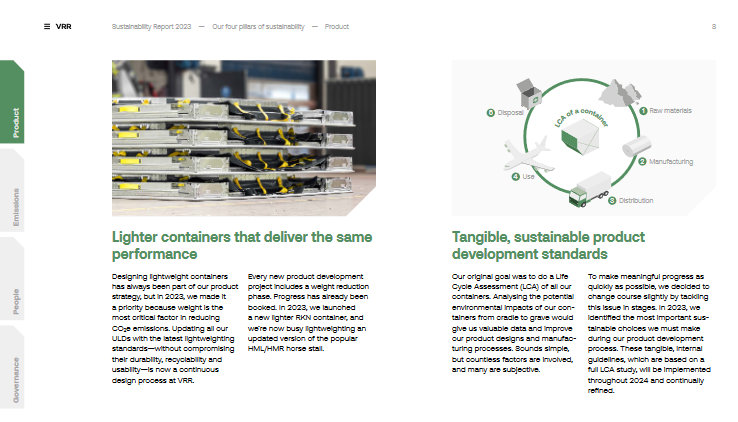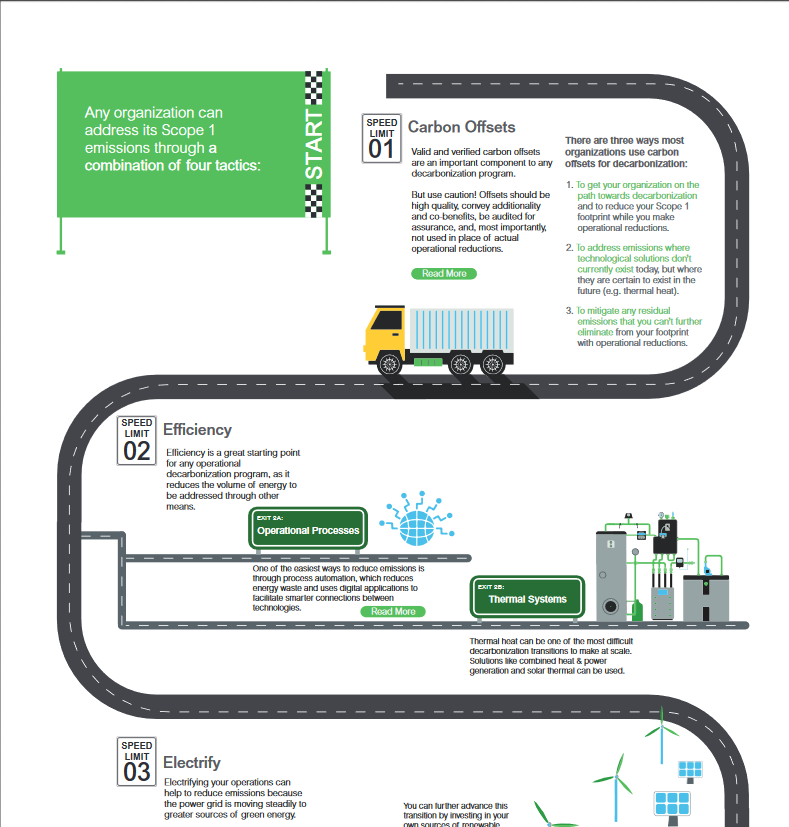7 Content Marketing Ideas to Promote Your Sustainability Initiatives (with examples)
By Helen McCrone, Freelance Content Writer | 1,051 words
If your company has embraced sustainability and achieved some success in making a positive impact, your next step is to inform your stakeholders and inspire others in your industry to follow suit. (You don't want to keep all the good ideas to yourself, do you?)
As a content writer, I’m seeing an increasing number of sustainability projects land on my desk from B2B companies, including impact reports, case studies, landing pages and educational articles. It’s interesting to see the different approaches they are taking to publicize their sustainable initiatives.
The reasons they are going public are just as interesting, from improving communication with stakeholders to safeguarding future inward investment. But what’s the best way to disclose your company’s activities on an issue that is not your core business but is nevertheless of great interest to others?
Here are 7 content marketing ideas that your business can use to showcase your sustainable practices.

1. Draw attention to your sustainability strategy
Start at the beginning of your sustainability journey: your strategy. Even though it's designed primarily for internal purposes, making an external statement about the way you want to realize sustainability benefits helps all stakeholders understand the importance you are placing on this issue. Press releases, social media posts, newsletters and website news updates are just some of the methods you can use to spread the word.
Real-business example:
Unveiling a path for a sustainable tomorrow: Koppert, a producer of safe and healthy growing solutions for farmers, announced its Future Forward sustainability strategy via a press release, a news item on its website and a LinkedIn post. (Note the accompanying detailed graphic that illustrates the content.)
2. Be transparent about your environmental impact
Transparency is critical to promoting sustainability. By publishing an annual impact report that outlines clearly and honestly your achievements, areas for improvement and future goals, you demonstrate your commitment to sustainability. This not only helps build trust among your stakeholders (thus avoiding suspicion of greenwashing) but also encourages others to be just as transparent.
Real-business examples:
Engaging with stakeholders: Various governments and regulatory bodies now mandate that large companies disclose a range of ESG metrics. Packaging company Sonoco, which is listed on the NYSE, publishes an annual sustainability report that includes factors like materiality matrix and climate-related risk management. Despite the breadth and depth of information, it’s managed to produce an accessible report that balances text, graphics and white space.
Reporting on progress: VRR, a leading manufacturer of air cargo containers, produced its first impact report two years after making sustainability a key component of its corporate strategy. It uses an easy-to-read format and is completely honest about the goals it’s achieved and those that were overly ambitious.
3. Share your success stories
Share success stories of sustainability initiatives that your company has implemented or collaborated on. Emphasize the challenges overcome, the benefits reaped, the positive impacts made, and the valuable lessons learned. These case studies not only highlight individual and collective efforts but also serve to inspire others to adopt sustainable practices, showing them that change is possible and impactful.
Real-business examples:
Reducing Formula 1 emissions: Logistics giant DHL issued a press release announcing that it partnered with Formula 1 to achieve an average 83% reduction in event delivery. It appears on their website and in various industry publications.
Fewer truck trips and safer storage for eggs: Big-box warehouse club Costco takes a different approach. It weaves its initiative to create new, stronger packaging from recycled water bottles into the cover story of its monthly magazine, The Costco Collection.
4. Explain complex sustainability topics
Videos are quick to engage a target audience and can explain complex sustainability topics in a more straightforward and interactive way. Interviews, animated tutorials, and behind-the-scenes footage are some ways to use video to promote sustainability and showcase your projects. They're also a great way to get your colleagues involved in your promotional activities.
Real-business example:
Circular economy in action: BASF, a global chemicals company, uses a documentary-style video to show how they teamed up with two smaller businesses to raise awareness about the value of recycling used fishing nets into new products.
5. Offer sustainability tips
Share practical tips to help suppliers and customers incorporate sustainability into their daily processes. These tips could be on reducing waste, conserving energy, building a culture of eco-awareness, or any other initiatives that you have launched and are relevant to your industry. You can share through social media posts, blog posts, magazine articles and newsletters to empower other businesses to make a difference in their spheres.
Real-business example:
Demystifying sustainable IT: Data technology company TechTarget keeps its website visitors up-to-date with a page that includes tips, guides and news on green IT.
6. Present interesting facts
When it comes to presenting data or processes in an easy-to-understand way, infographics are highly effective. Transform facts about your company’s sustainability performance, sustainability strategy or the lifecycle analysis of your products into engaging visual images that catch the eye and encourage shares.
Real-business example:
Decarbonizing your operations: Energy solutions provider Schneider Electric explains how a company can reduce its Scope 1 emissions. The infographic depicts a truck driving along a racetrack and passing four tactical speed limit signs to emphasize the journey aspect of decarbonization.
7. Provide thoughtful insights
Sharing interesting observations through e-books or whitepapers can be a game-changer in promoting sustainability. These in-depth pieces not only promote a better understanding of a sustainability issue in your industry but also position your company as a thought leader. By presenting data in an unbiased fashion, you can inspire others to adopt your solutions.
Real-business example:
Engaging employees in your ESG strategy: ITA Group, which specializes in helping brands with engagement solutions, issued a white paper on how organizations can build employee buy-in into their ESG strategy.
Wrapping it all up
Adopting sustainability practices in your day-to-day operations isn't just about following a trend; it's about making meaningful change. By using content marketing to share your success stories, provide insights and be transparent about your triumphs and challenges, your company can differentiate itself from the competition, increase stakeholder engagement and maybe even galvanize others into action.
Are you a B2B company that needs assistance with your sustainability content marketing? Feel free to reach out to me at [email protected]. I specialize in success stories, ebooks, white papers and business reports.




